The sun is setting and night is beginning to fall. Many photographers are packing up their gear and heading home for the day, but Andy Austin, founder of Peak Photography of Montana, is just getting ready for the night ahead.
On a moonless night the sky comes alive with a celestial show of planets, stars and constellations. Using the right photography equipment, images taken at night can be as clear and detailed as any daytime shots, often revealing much more depth and mystery.
While the results are often awe-inspiring, Austin says night photography isn’t nearly as complicated as many think.
To capture the stars for yourself, here’s what you will need: a camera with a manual mode, a tripod, a remote shutter (to minimize camera shake) a location with minimal light pollution, and patience.
As for choosing a lens, Austin says it all depends on the look you are trying to accomplish.
“Personally, I prefer to shoot with a wide angle lens, but it is possible to take great photos with a telephoto as well.”
The best time to capture stars and the Milky Way is on a moonless night, but never underestimate what can also be taken while the moon is out. When photographing with the moon you will get a much better foreground, but fewer stars.
To capture the best Milky Way photos aim your camera towards Scorpio (if you’re not up on your astronomy, try an app like Google Sky Map as a guide).
The most photogenic parts of the Milky Way also rise and set, just like the moon. In the winter it doesn’t rise until early in the morning, making it much more difficult to photograph. In the summer it is usually visible in the Northern Hemisphere once the stars come out.
It never hurts to consult meteor shower calendars to find when you can see premium showers, and which direction to position your camera towards.
The next shower is July 29-30, 2013 and is the Delta Aquarids.
Here are some amazing images taken by Austin and how he did them.
1. Hyalite Canyon, Bozeman, Mont.
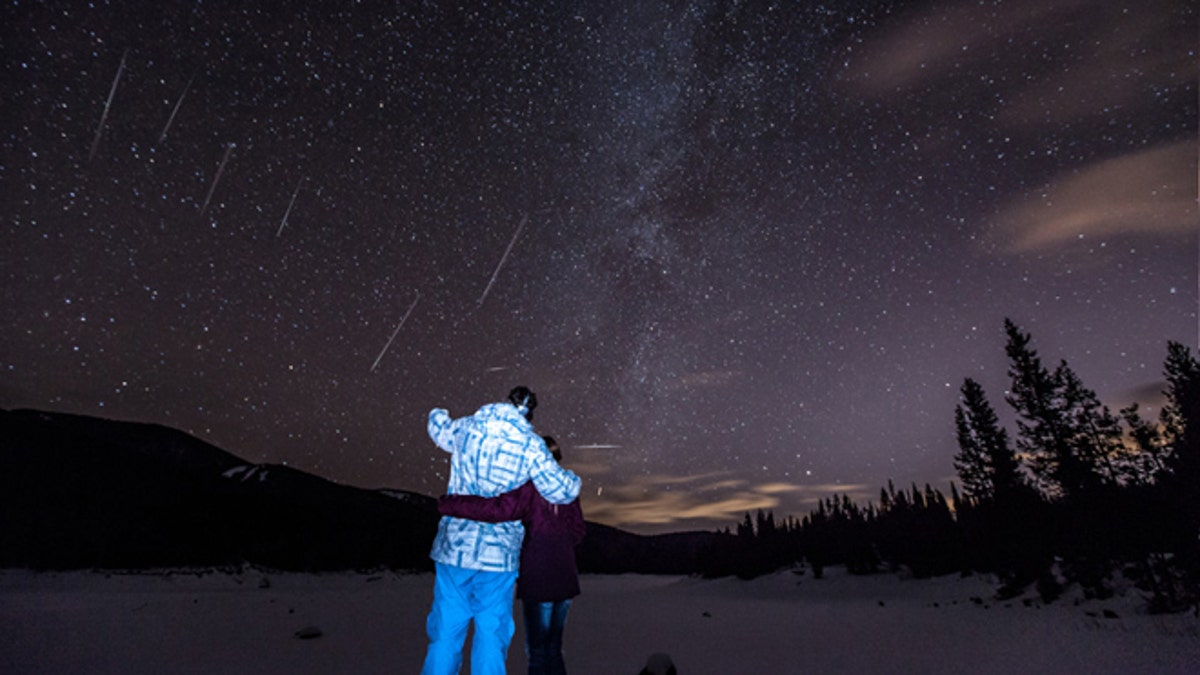
(Andy Austin)
In December 2012, the Geminid Meteor Shower lived up to its expectations and turned out to be one of the best showers of the year. With hundreds of meteors an hour, and a new moon whose light didn’t dim the views of the stars, it was a photographer’s dream. This composite image of all the meteors photographed that night was taken in Hyalite Canyon, near Bozeman, Montana.
Shot with a Canon 5D Mark II and Canon 16-35 F/2.8 settings for each shot were ISO 3200 f/2.8 30 seconds.
2. Hyalite Canyon, Bozeman, Mont.
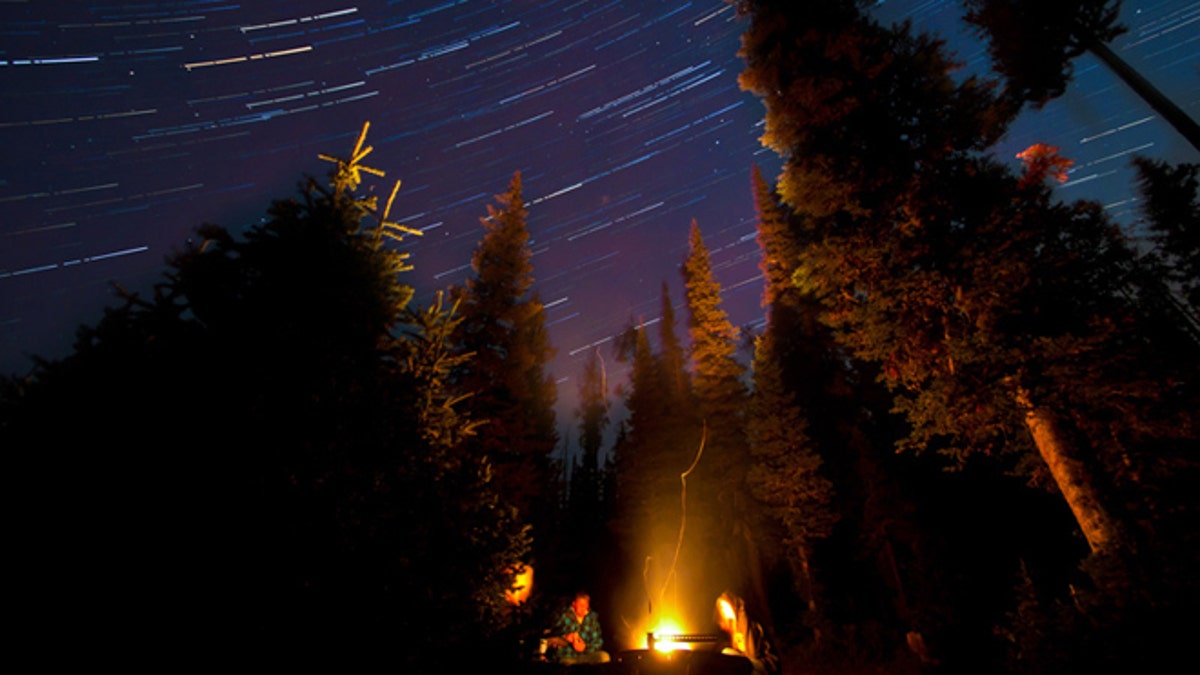
(Andy Austin)
This autumn night sky is another image from Hyalite Canyon. To achieve the star trails, the camera shot thirty-second exposures, continuously, for 30 minutes. Once the time lapse was competed, the photos were stacked using star-stacking software to create one cohesive image.
Shot with a Canon 60D and Tamron 10-24 f/3.5 and each shot was done at ISO 1600 F/3.5 for 30 seconds each.
3. Quake Lake, West Yellowstone, Mont.
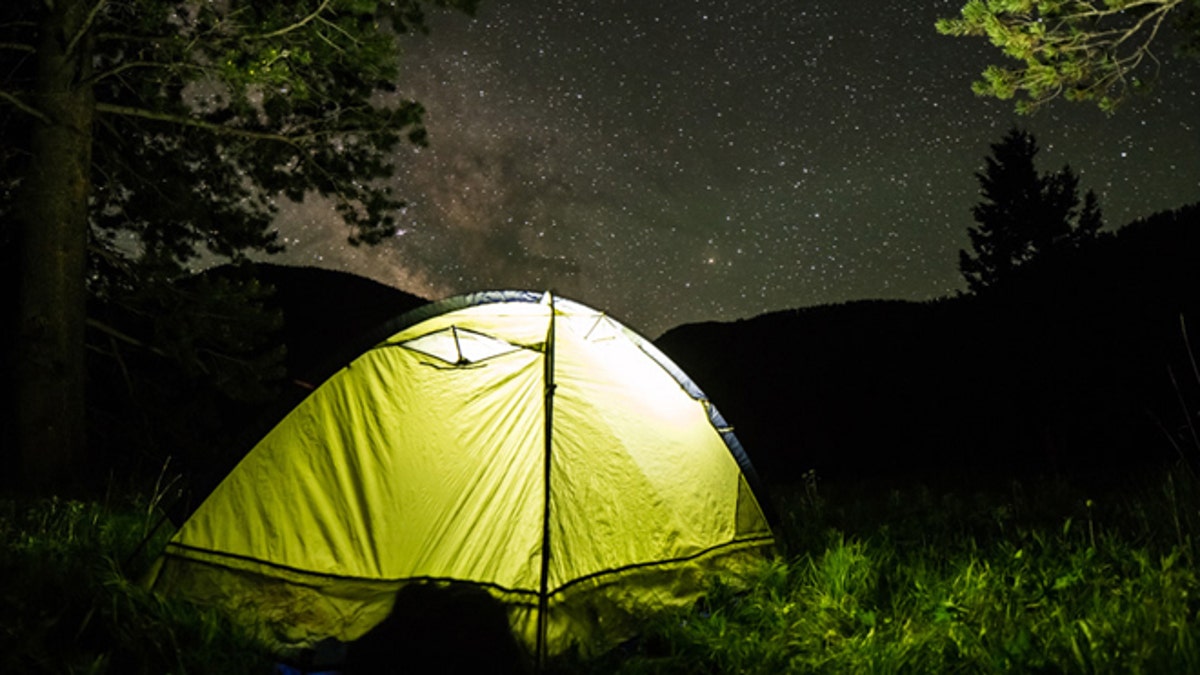
(Andy Austin)
The Milky Way plays hide and seek in this June 2013 photo near West Yellowstone, Montana. As one image from a night-long time-lapse, it shows the tent illuminated by Austin’s headlamp as he gets ready for bed (his feet are the dark spot at the bottom of the tent.)
Shot with a Canon 6D and a Canon 24mm TS-E at ISO 3200 F/3.5 and 25 seconds
4. Arches National Park, Utah
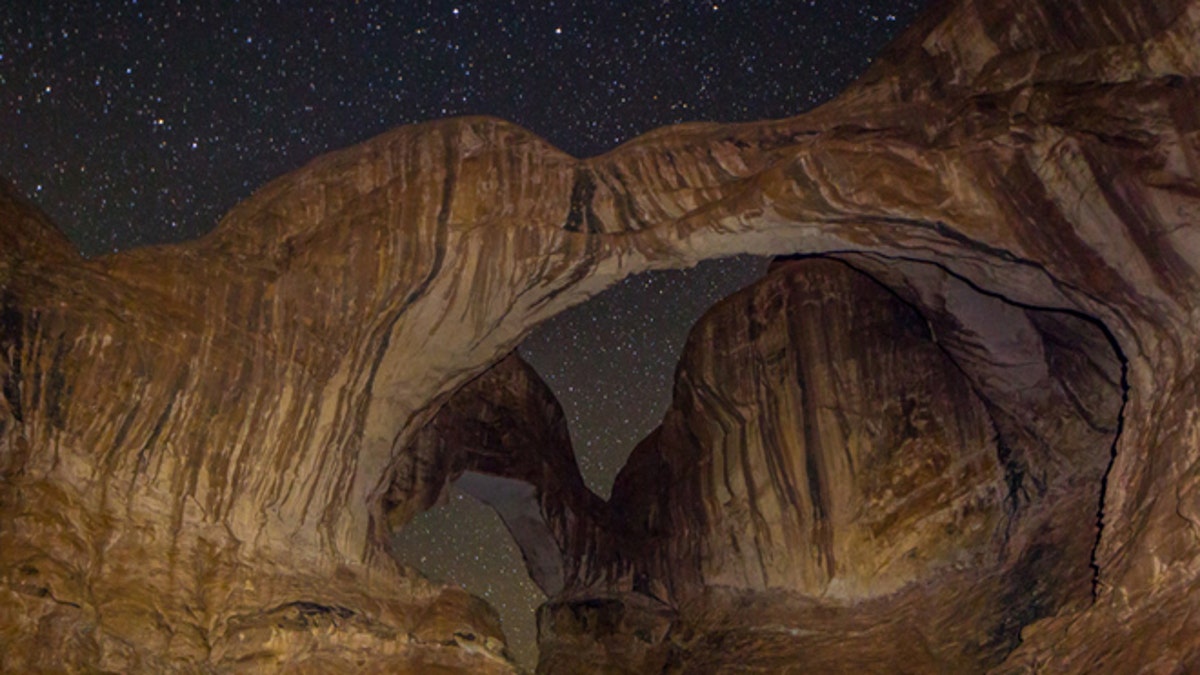
(Andy Austin)
After a few disappointingly rainy nights in Moab, Austin finally caught a break. He made the most of it by shooting this photo, as well as the next two featured images. He used his headlamp to light Double Arch in Arches National Park during the photo’s exposure.
Shot with a Canon 6D and a Canon 24mm TS-E at ISO 3200 F/3.5 and 30 seconds
5. Arches National Park, Utah
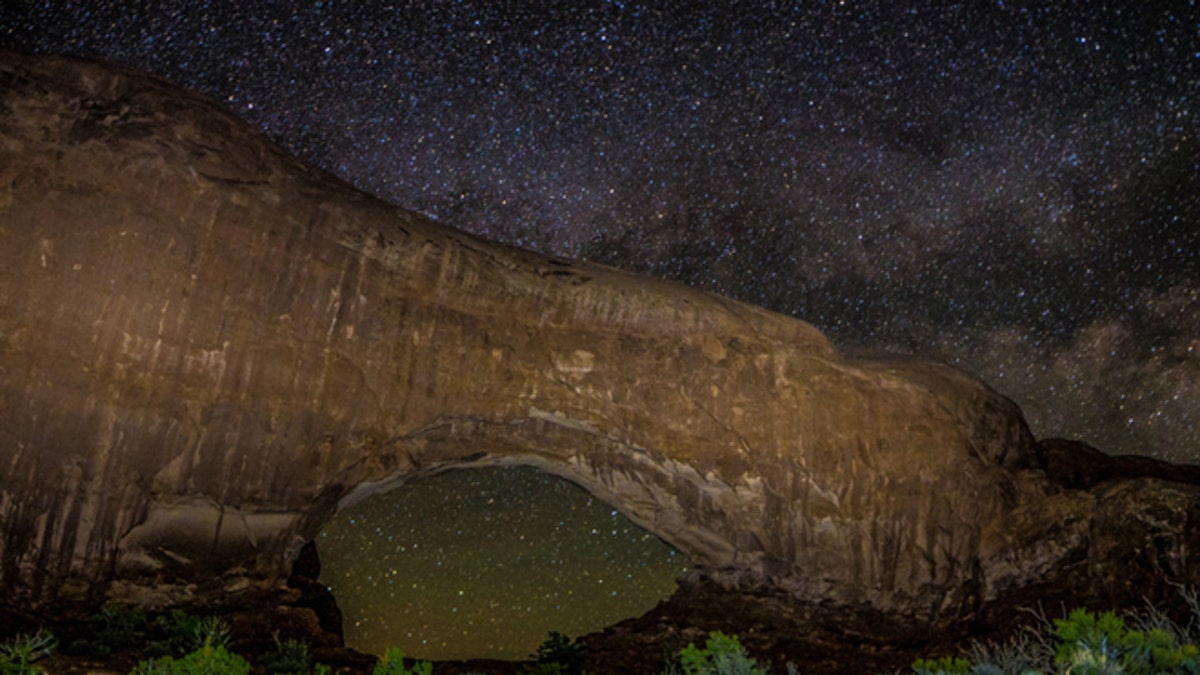
(Andy Austin)
After photographing Double Arch, Andy hiked to North Window. His perfect (or perhaps lucky) timing caught the Milky Way just as it rose over the top of the rock formation. Once again, he used his headlamp for illumination as it was a moonless night.
Shot with a Canon 6D and a Canon 24mm TS-E at ISO 4000 F/3.5 and 30 seconds
6. Arches National Park, Utah

(Andy Austin)
Heading out of the area, Austin turned around for one last look. He was greeted by the Milky Way, above the whole landscape, illuminating the geological features below.
Shot with a Canon 6D and a Canon 24mm TS-E at ISO 3200 F/3.5 and 30 seconds
7. Near Bozeman, Mont.
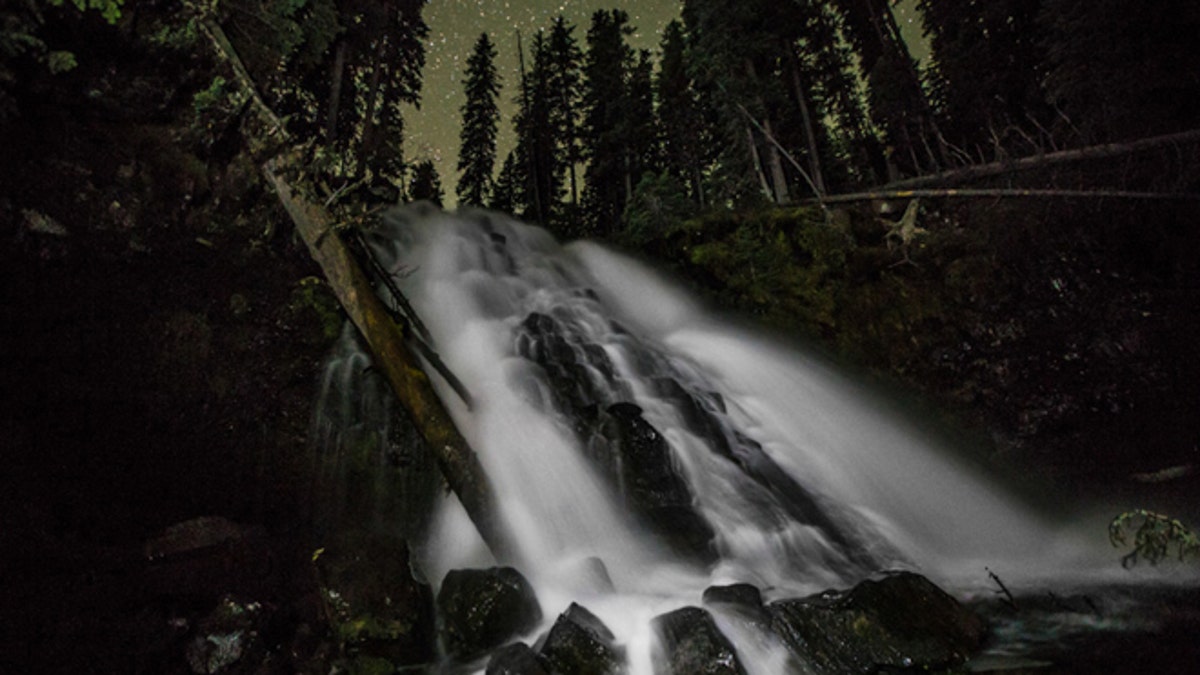
(Andy Austin)
Hoping to capture Montana’s Grotto Falls in a unique manner, Austin attempted light painting with his headlamp. Though the photographs turned out much different than anticipated, he nonetheless loved the results of the excursion.
Shot with a Canon 6D and Canon 16-35 F/2.8 at 16mm ISO 3200 F/2.8 and 30 seconds
8. Hyalite Reservoir, Mont.
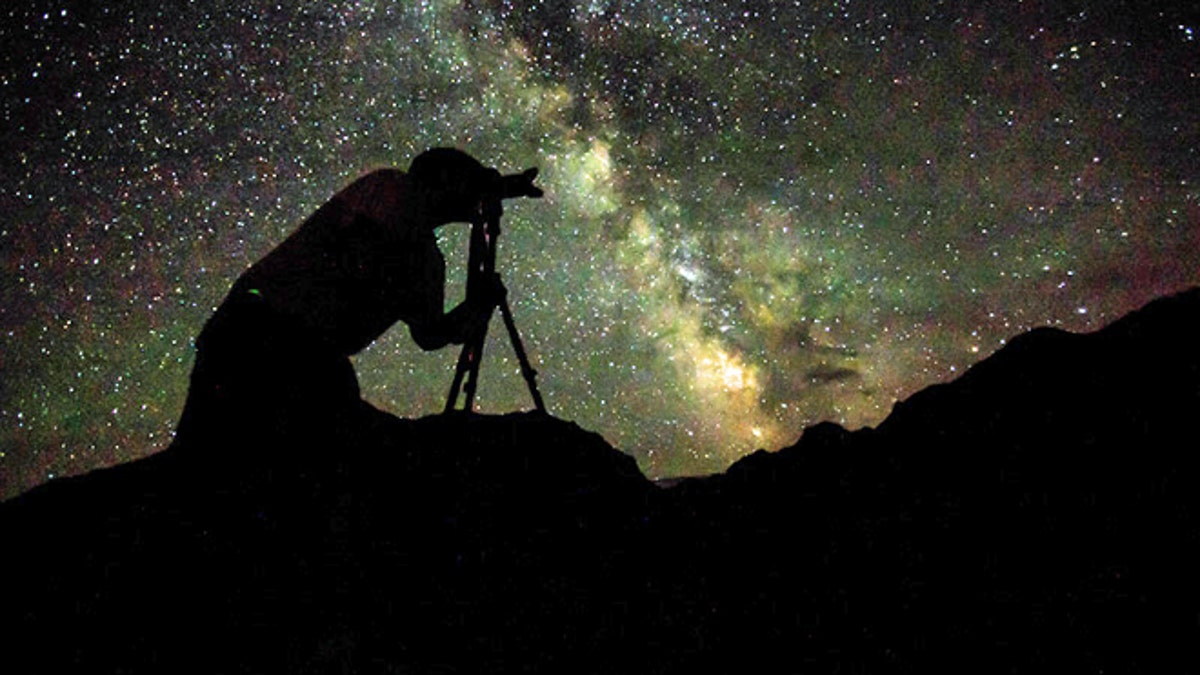
(Andy Austin)
In order to capture his silhouette, Austin had to remain perfectly still for the duration of the 15-second exposure. This was taken in the Hyalite Reservoir, one of Austin’s favorite places for night photography because there is so little light pollution.
Shot with a Canon 60D and a Tamron 10-24 f/3.5 at 10mm ISO 3200 f/3.5 and 15 seconds
9. Paradise Valley, Mont.

(Andy Austin)
Due to extreme drought conditions, 2012 was one of the worst fire seasons Montana has seen in several years. This image captures the tail end of the Pine Creek Fire in Paradise Valley. At one point, flames covered the entire mountain.
Shot with a Canon 60D and a Tamron 10-24 f/3.5 at 11mm ISO 1600 f/3.5 and 30 seconds
10. Hyalite Canyon, Utah

(Andy Austin)
Austin achieved this photo by creating a composite of two separate shots of Palisade Falls. The foreground with the waterfall was taken while the moon was still visible. The background was shot once the moon disappeared behind a nearby mountain.
Both images were taken with a Canon Rebel T2i and a Tamron 10-24 f/3.5 at 10mm ISO 1600 f/3.5 and 30 seconds
